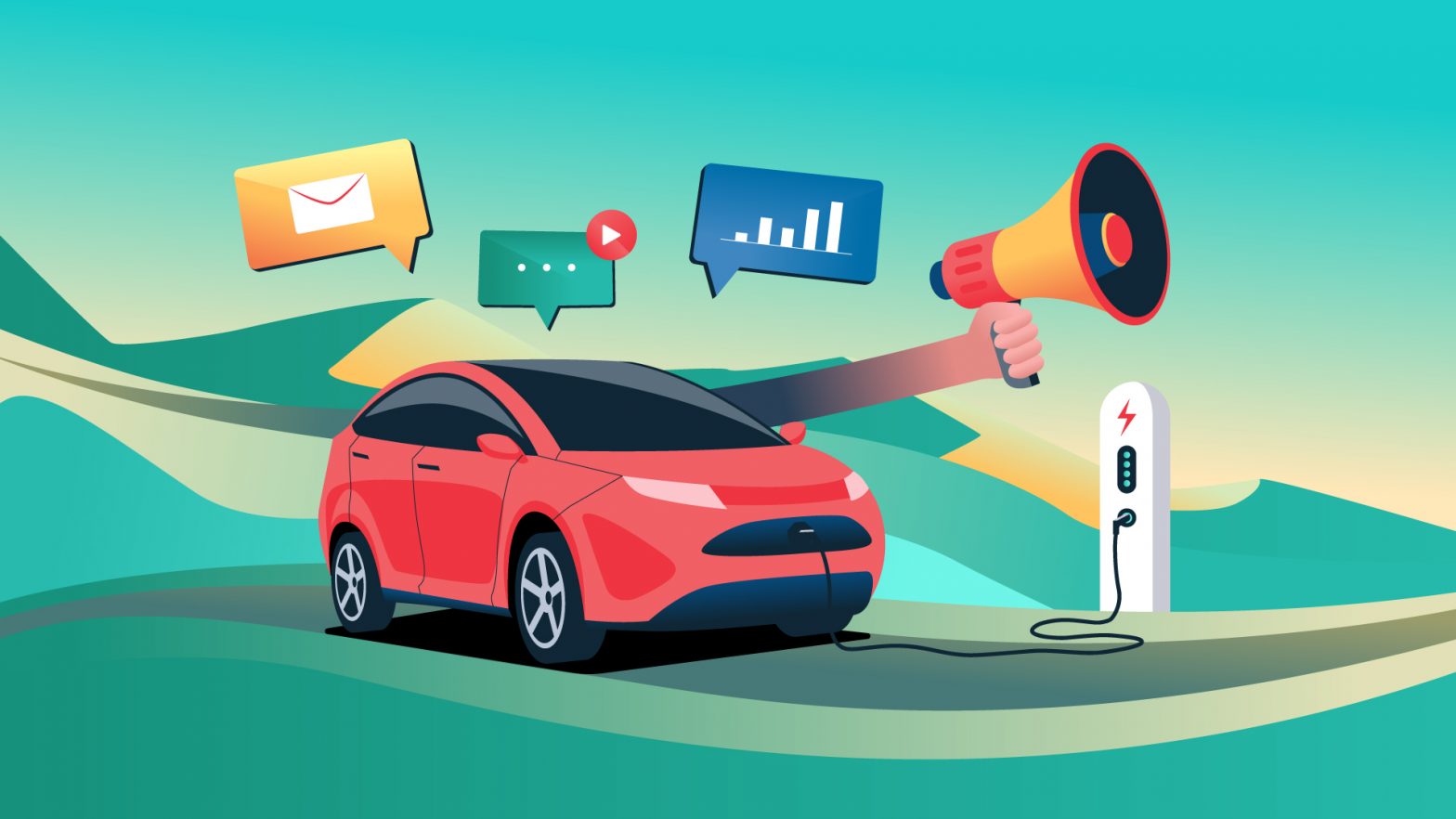It’s no secret that our collective attention span is shorter than ever. It dropped from 12 to 8 seconds in just 15 years. And things aren’t looking up with all the screens inviting us to doom-scroll and trying to steal our focus.
So, how do you cut through all this digital noise and get your audience to notice your brand?
By using the power of words.
Copywriting is a synergy of science and art, whose goal is crafting compelling narratives that resonate with your audience.
This effective tool will help you capture your visitors’ elusive attention, encourage them to explore your website a little longer, and ultimately convert them into paying customers.
This article will discuss actionable strategies you can use to elevate your brand, build credibility, and build lasting relationships with your customers.
1. Focus on the “why”
When crafting the copy, it’s easy to get caught up in the “how” and insist on the features, the specs, or the technical details of your product or service. But while these details are important, they don’t tell the whole story.
To truly connect with your audience and inspire them to take action, you need to focus on the “why.”
The “why” is about understanding your audience’s motivations, desires, and pain points, as well as about figuring out what makes them tick and drives their decision-making process.
When you insist on the “why,” you shift the conversation from what your product does to how it can improve their lives.
In other words, effective copy is customer-centric and revolves around the benefits, not features.
This is where the real power of persuasion lies.
By unearthing the underlying reasons why someone would want or need your product, you can tailor your message to speak directly to their desires and aspirations.
Your copy can illustrate how your product or service can help them achieve their goals, overcome their challenges, or simply make their lives easier and more enjoyable.
When you leverage the “why,” you establish an emotional connection with your audience, show them that you understand their needs, and demonstrate that you have their best interests at heart.
This builds trust and credibility, making them more likely to choose your brand over the competition.
For example, Vinyl Status on this page flips the narrative, and instead of simply listing the various colors, fonts, and designs available (the “how”), the copy focuses on the “why” part of the equation.
In this case, it’s the desire for self-expression, motivation, and inspiration, paired with the practicality of a durable product that appeals to its target audience.
2. Create a Strong Tagline
We’ve already mentioned the dwindling attention spans, which means that you don’t have much time to grab your website visitors by the eyeballs.
You’d better make a great first impression because unless you capture their attention within the first 10 seconds, they’ll bounce off and go back to the SERPs.
One way of avoiding this worst-case scenario is crafting a strong, show-stopping tagline — a short, memorable phrase that encapsulates your brand’s essence, promise, and unique selling proposition.
These couple of words will attract your audience and distinguish you from competitors.
A well-crafted tagline can be a powerful tool for building brand awareness, reinforcing your message, and leaving a memorable impression.
“Just do it,” “Think different,” or “Betcha Can’t Eat Just One” are iconic taglines that immediately bring Nike, Apple, and Lays to mind.
But, apart from being memorable, an effective tagline should also:
- Communicate your brand’s personality. Is your brand fun and playful or serious and professional? Your tagline should reflect that.
- Highlight your unique value proposition. What makes your brand different from the competition? Answer that question through the tagline.
- Inspire action. A good tagline can motivate your audience to learn more about your brand or take a specific action.
Classical Guitar Shed uses their homepage tagline cleverly to intrigue their target audience by asking a simple question: Do you love the sound of classical guitar?
It’s also an invitation, sparking curiosity and immediately connecting with those who have a passion for the instrument. It perfectly complements the rest of the copy which explains what website visitors can expect to find if they stick around.
Together, the two pieces of copy create a cohesive message that speaks directly to the target audience and encourages them to take action.
3. Come Up with a Compelling CTA
After you’ve crafted captivating headlines, told engaging stories, and described your products in vivid detail, you need a final touch to seal the deal — the call to action (CTA). This is the nudge that pushes your readers to move from simply reading to taking the next step.
Think of your CTA as a helpful signpost. Whether it’s “Shop Now,” “Learn More,” “Sign Up Today,” or “Download,” your CTA should clearly indicate what you want your visitors to do next.
But remember, besides giving them directions, your CTA should make that next step appealing and tell them what they expect to happen if they click on it.
In a nutshell, a compelling CTA is:
- Clear and specific. Avoid vague language like “Click Here.” Tell your audience exactly what they can expect when they click.
- Action-oriented. Use verbs that encourage action, like “Get,” “Discover,” “Join,” or “Start.”
- Benefit-focused. Highlight the value or advantage your audience will gain by taking action.
Your CTA is the final piece of the puzzle. It’s your last chance to guide your audience toward the desired outcome, which is why you should make it clear, concise, and enticing.
Don’t be afraid to experiment with different CTAs to see what resonates best with your audience. Try different placements, wording, and design elements to optimize your results.
Goldstein Patent Law ticks all the boxes with an informative and no-nonsense CTA that clearly explains how potential customers will benefit if they click on it.
The microcopy urges visitors to stop paying for patents they don’t need and invites them to explore their options before they decide to invest their money in a trademark.
Another great example is Dollar Shave Club– which is well-known for clever and catchy marketing, and its CTAs are nothing short of brilliant.
The limited Clubs and Shaves edition, available ahead of Independence Day, features a convenient “Salute Your Face” CTA to encourage potential customers to try their grooming products.
This CTA is both playful and patriotic, aligning with the campaign’s overall theme and appealing to consumers’ sense of national pride.
4. Address the Reader
Copywriting gives you the ability to establish a personal connection with your audience. The most effective way to achieve this is by speaking directly to your readers as if you’re having a one-on-one conversation with them.
This involves using the second-person pronoun “you” generously throughout your copy.
This simple psychological trick will help you:
- Engage your audience. Directly addressing your readers makes them feel seen and heard, drawing them into your message.
- Establish relatability. Speaking directly to your audience helps to break down barriers and creates a sense of familiarity. This way, you can show you understand their needs and desires.
- Be more persuasive. Addressing your reader as “you” allows you to effectively highlight how your product or service can benefit them personally.
The copy shouldn’t be about your company, products, and services but about your potential customers. By leveraging this second-person POV, you’ll answer their “What’s in it for me?” question.
For example, instead of saying “We deliver exceptional car-rental services,” it’s much more impactful to say something along the lines of “You’ll enjoy a seamless and hassle-free car rental experience with us.”
The use of “you” will shift the focus from the company to the customer, making the message more personal and relevant.
However, it’s important to strike the right balance. Overusing “you” can sound pushy or insincere. Use it naturally and strategically to create a conversational tone that resonates with your audience.
Ovaeda takes this approach for its Grey Composite Decking product page and puts itself in the audience’s shoes. The brand includes potential customers in the narrative and invites them to imagine their gardens after the makeover.
5. Make the Most of Social Proof
Customers, on average, read 10 online reviews before making a purchase. This means that your copy alone isn’t enough to convince your audience to convert. What you need is to let your existing customer do the talking.
Social proof is a powerful psychological and marketing phenomenon based on the fact that people are more likely to trust the recommendations and opinions of others when making purchasing decisions. Those others can be their friends and family but also complete strangers — anyone not affiliated with your brand.
Therefore, if you want your copy to be convincing, it should be paired with customer reviews and testimonials, user-generated content, or case studies.
Social proof works because it:
- Builds trust and credibility. When potential customers see that others have had a positive experience with your brand, they are more likely to trust you and believe in what you say about your products or services.
- Reduces risk perception. Social proof reassures potential customers that they are making a safe and wise choice by choosing your brand.
- Enhances brand reputation. Positive reviews and testimonials can significantly boost your brand’s reputation and attract new customers.
Instead of bragging about how awesome your products are, you should demonstrate the value you provide to your customers by showcasing what they think about your brand.
Just make sure your social proof is genuine and share the stories of real people who have benefited from your offerings.
Greenhouse Emporium gives its happy customers the floor and lets them have their say about the brand’s Victorian greenhouses. The website features verified customer reviews praising customer service, product quality, and even how easy it is to find the right product and place an order.
6. Opt for Minimalism
Consumers are overwhelmed with too much information, which means that when it comes to copy, less is often more.
Shorter sentences and paragraphs are easier to digest, especially on digital platforms where attention spans are notoriously short, as we’ve already mentioned.
Cut out any fluff, redundancies, or jargon that might confuse your audience. Each word should serve a purpose in conveying your message clearly and concisely.
Think of it as decluttering your writing — get rid of anything unnecessary and focus on the essentials.
The thing is, minimalism doesn’t mean sacrificing creativity or depth. It refers to finding the most impactful way to communicate your ideas.
A well-crafted, minimalist copy can be just as engaging and persuasive as a longer, more elaborate one. It allows your message to shine through without any red herrings that will distract readers.
Here are some tips for creating copy that will resonate with your audience without inundating them with superfluous details:
- Prioritize clarity. Make sure your message is easy to understand at first glance. This no-frills tactic will cut through the noise and allow your audience to quickly grasp the key takeaways.
- Edit ruthlessly. Don’t be afraid to delete anything that doesn’t add value to the reader.
- Use strong verbs. Choose action words that pack a punch and prompt your customers to take action.
- Vary sentence length. Combine short and long sentences to create rhythm and flow.
- White space is your friend. Break up your text with ample white space to improve readability and give your copy breathing room. This will also allow you to accentuate the most relevant elements of the copy, such as the CTA or product details.
Uber is a textbook example of how powerful a succinct copy can be. Potential users immediately understand what they can expect to get — go anywhere or drive when they’re free and earn as much as they need.
There are no elaborate explanations, just a couple of well-thought-out sentences, a CTA, and lots of negative space.
Wrapping Up
Copywriting can be the key to unlocking your brand’s full potential.
Remember to use every word carefully and make the most of the very valuable and scarce real estate of your website to engage your audience and grab their attention right away.
These tips can serve as inspiration to help you craft the copy that will improve your brand’s visibility and credibility.








